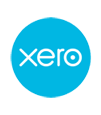HK CORPORATE FINANCE
Business Valuation Methodology
Value Tip:
The value of a business is generally a function of what it may earn in the future. It is prospective cash flows, not historic earnings that repay borrowings and support lifestyles.
Value Methodology
Businesses that are going concerns are generally valued using a multiple of sustainable, prospective cash flows or earnings. For the purposes of this article I have used EBITDA (earnings before interest tax depreciation amortisation) as a measure of cash flow as demonstrated in the following generic example:
Enterprise Value (value of operating assets and liabilities)
Sustainable cash flow from operations (EBITDA)
The value formula deems the EBITDA amount selected to be sustainable in perpetuity. Anticipated growth in the chosen cash flow amount is reflected in the choice of the multiple. The greater the growth prospects, the higher the multiple. The sustainable cash flow amount is often derived by averaging historic results, adjusted for non-arms length amounts and unusual items and /or from next year's forecast. Value Tip: Sellers tend to add back all the unusual items such as a large bad debt. Buyers will argue that you cannot simply add back all these amounts, because by their very nature, they have a habit of happening every year, albeit in differing forms and amounts.
EBITDA Multiple
The multiple is the inverse of the required rate of return. For instance, a multiple of 5 times sustainable cash flow of $1 million, drives an Enterprise Value of $5 million. The inverse is cash flow of $1million generated by a $5 million investment represents a return on investment of 20%. The multiple is a combination of the risk free rate of return plus additional specific risk for the business (industry, size, dependencies), net of long term growth potential. Value Tip: Whenever you can, look to the markets to determine what multiples "comparable" companies sell for and to whom.
Enterprise value
Value calculations based on pre-interest cash flows determine the value of the operating assets and liabilities including goodwill, but exclude the value of interest bearing debt, net of cash holdings. Value Tip: The level of prospective cash flow chosen and the multiple are inextricably linked in this value equation. The higher the level of cash flow chosen the greater the risk of sustaining it, therefore a lower multiple (its inverse being a higher rate of return) is applied.
Non-operating net assets
To Enterprise Value is added the value of the non-operating assets less non-operating liabilities. An example of a non-operating asset would be a piece of vacant land held by the company but not currently used in the business. Value tip: These items are often overlooked. It is equally important to adjust for the impact these items have on cash flow. In this example, property holding costs would be eliminated from cash flows.
Debt
A business is financed by debt and shareholders' equity. Because interest has not been deducted from cash flows above, the value of the existing debt (net of surplus cash) has not been "valued" in the equation to date.
Share value
The sum of the Enterprise Value and the value of the non-operating net assets is allocated between the debt holders and the shareholders. Debt, which represents a prior charge on the value of the business is deducted to leave the residual value for the shareholders, being the share value.
Reasonability Tests
Goodwill
Goodwill is calculated as the difference between (1) the value of the operating assets and liabilities derived from a multiple of cash flows as above and (2) the equivalent replacement cost of the operating tangible net assets. Goodwill can represent the premium paid for a business earning above average returns on its net assets and/or for the avoidance of start up costs to get a business to the same stage of profitability. Value tip: Calculate the amount of goodwill in terms of its payback period. This reality check is important. When the purchase price includes a large goodwill component, buyers will often seek to lower the transaction risk by paying for some or all of the goodwill only when it is earned. ie through an earnout. Remember that goodwill is non deductible for tax purposes.
Rules of Thumb
A number of businesses, especially those with reasonably consistent expense structures are often valued used using rules of thumb. For instance, pubs, funeral homes and travel agencies tend to be priced on multiples of revenue. Value tip: Remember debt is repaid out of cash flow not revenue and the purchase price must make sense from a multiple of cash flow perspective.




